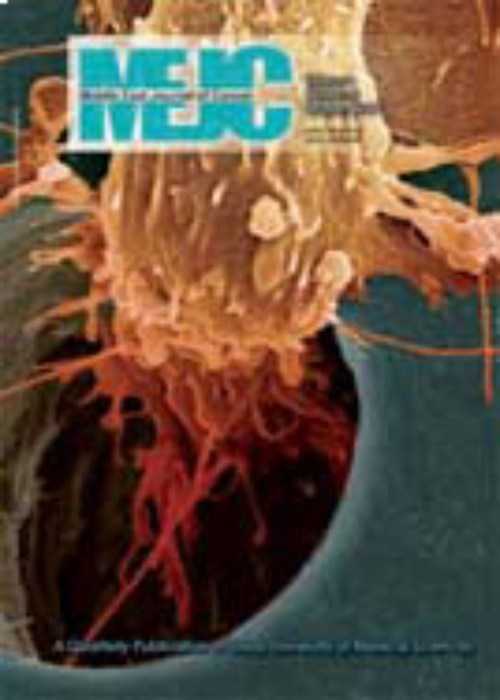HER2 Overexpression in Borderline and Malignant Ovarian Tumors: A Cross-sectional Study in an Iranian Population and Literature Review
Author(s):
Article Type:
Research/Original Article (دارای رتبه معتبر)
Abstract:
Background
Different studies have investigated the overexpression of human epidermal growth factor receptor 2 in ovarian cancers, in addition to the association between the level of its overexpression and tumor characteristics (tumor grade, subtype, stage, and prognosis). However, the prognostic significance of human epidermal growth factor receptor 2/neu dysregulation in epithelial ovarian tumors is controversial. The current study aims to assess human epidermal growth factor receptor 2 overexpression in different types and stages of epithelial borderline and malignant ovarian tumors in a population of Iranian patients.
Methods
We conducted this cross-sectional study on 100 patients diagnosed with epithelial borderline and malignant ovarian tumors who referred to the Cancer Institute of Imam Khomeini Hospital at Tehran between 2012 and 2014. After selection of the appropriate tissue block, we prepared slides for immunohistochemical staining with the human epidermal growth factor receptor 2 marker. Human epidermal growth factor receptor 2 positivity was evaluated and scored according to Ellis and Wolff recommendations. Cases with equivocal immunohistochemical results (score 2) also underwent chromogenic in situ hybridization.
Results
The most prevalent tumor in our study was serous carcinoma (54%). Human epidermal growth factor receptor 2 scores were: 0 in 69%, 1+ in 26%, 2+ in 4%, and 3+ in 1% of tumors. Chromogenic in situ hybridization examination of cases with human epidermal growth factor receptor 2 score of 2 showed negative results for human epidermal growth factor receptor 2 gene amplification. We observed no association between human epidermal growth factor receptor 2 and the level of tumor differentiation, histologic subtype, clinical stage, tumor size, and patient’s age.
Conclusion
Controversial results and wide range of prevalence in human epidermal growth factor receptor 2 overexpression in different studies could be due to several causes. Technical considerations, tumor heterogeneity, and lack of standard guidelines for interpretation could influence the results. We did not find any relationship between human epidermal growth factor receptor 2 overexpression and prognostic indices of grade, clinical stage or histologic subtype as many other reports. Future studies should be conducted on larger numbers of patients with different disease stages and adequate numbers of different histologic subtypesKeywords:
HER2 , Overexpression , Ovary , Borderline , Malignant , Tumor , Iran
Language:
English
Published:
Middle East Journal of Cancer, Volume:9 Issue: 4, Oct 2018
Pages:
300 to 309
magiran.com/p1894122
دانلود و مطالعه متن این مقاله با یکی از روشهای زیر امکان پذیر است:
اشتراک شخصی
با عضویت و پرداخت آنلاین حق اشتراک یکساله به مبلغ 1,390,000ريال میتوانید 70 عنوان مطلب دانلود کنید!
اشتراک سازمانی
به کتابخانه دانشگاه یا محل کار خود پیشنهاد کنید تا اشتراک سازمانی این پایگاه را برای دسترسی نامحدود همه کاربران به متن مطالب تهیه نمایند!
توجه!
- حق عضویت دریافتی صرف حمایت از نشریات عضو و نگهداری، تکمیل و توسعه مگیران میشود.
- پرداخت حق اشتراک و دانلود مقالات اجازه بازنشر آن در سایر رسانههای چاپی و دیجیتال را به کاربر نمیدهد.
دسترسی سراسری کاربران دانشگاه پیام نور!
اعضای هیئت علمی و دانشجویان دانشگاه پیام نور در سراسر کشور، در صورت ثبت نام با ایمیل دانشگاهی، تا پایان فروردین ماه 1403 به مقالات سایت دسترسی خواهند داشت!
In order to view content subscription is required
Personal subscription
Subscribe magiran.com for 70 € euros via PayPal and download 70 articles during a year.
Organization subscription
Please contact us to subscribe your university or library for unlimited access!


